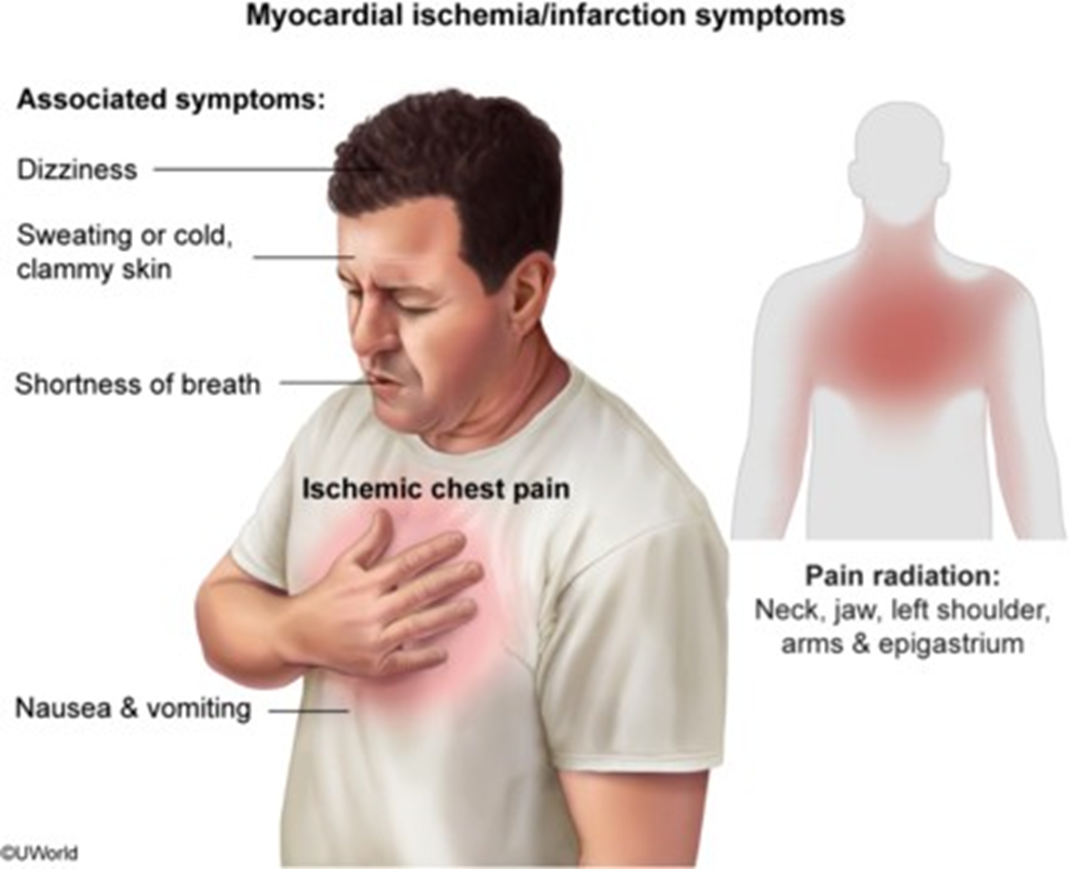A client presents to the emergency department reporting chest pain that is radiating to the left arm, shortness of breath, and diaphoresis. Which medication does the nurse anticipate being prescribed by the healthcare provider?
Morphine.
Oxycodone.
Hydromorphone.
Fentanyl.
The Correct Answer is A
Choice A rationale
The client’s presentation of chest pain radiating to the left arm, shortness of breath, and diaphoresis are classic symptoms of a myocardial infarction (heart attack)56. Morphine is often administered in this situation to relieve pain and reduce the workload of the heart.
Choice B rationale
Oxycodone is a strong opioid medication used to treat severe pain. However, it is not typically the first choice for pain relief in the setting of a suspected heart attack.
Choice C rationale
Hydromorphone is another strong opioid medication used to treat severe pain. Like oxycodone, it is not typically the first choice for pain relief in the setting of a suspected heart attack.
Choice D rationale
Fentanyl is a potent opioid pain reliever. While it can be used in the management of severe pain, it is not typically the first choice for pain relief in the setting of a suspected heart attack.

Nursing Test Bank
Naxlex Comprehensive Predictor Exams
Related Questions
Correct Answer is A
Explanation
Choice A rationale
For a client with emphysema who will be discharged with oxygen, understanding the guidelines for oxygen use is crucial. Misuse of oxygen can lead to serious health complications, so it’s important that the client knows how to use it correctly.
Choice B rationale
While energy conservation approaches can be beneficial for a client with emphysema, they are not as crucial as understanding the guidelines for oxygen use.
Choice C rationale
While smoking cessation strategies are important for a client with emphysema, especially one who smokes heavily, they are not as crucial as understanding the guidelines for oxygen use.
Choice D rationale
While weight loss methods can be beneficial for an obese client, they are not as crucial as understanding the guidelines for oxygen use for a client with emphysema who will be discharged with oxygen.
Correct Answer is A
Explanation
Notifying the healthcare provider of the client’s medication history is the priority nursing action. Heparin is an anticoagulant, which increases the risk of bleeding. The healthcare provider needs this information to make appropriate decisions about the client’s surgical plan and postoperative care.
Whether you are a student looking to ace your exams or a practicing nurse seeking to enhance your expertise , our nursing education contents will empower you with the confidence and competence to make a difference in the lives of patients and become a respected leader in the healthcare field.
Visit Naxlex, invest in your future and unlock endless possibilities with our unparalleled nursing education contents today
Report Wrong Answer on the Current Question
Do you disagree with the answer? If yes, what is your expected answer? Explain.
Kindly be descriptive with the issue you are facing.
